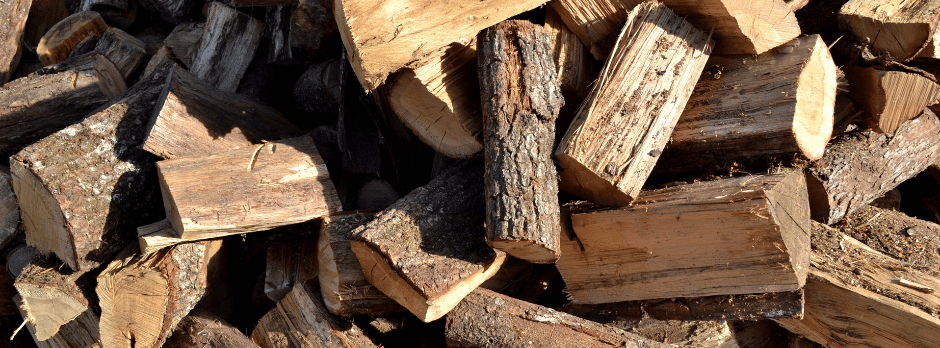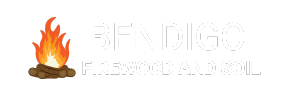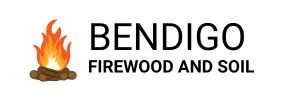What Type of Firewood Burns the Best
What Type of Firewood Burns the Best? A Complete Guide to Choosing the Right Wood for Your Fire

There’s nothing quite like the comforting crackle of a warm fire on a chilly evening.
Whether you’re heating your home, cooking over an open flame, or simply enjoying a campfire, the firewood you choose makes a huge difference. Not all wood is created equal—some logs burn long and hot, while others fizzle out quickly, leave behind excess smoke, or cause chimney buildup.
So, what type of firewood burns the best?
Let’s look into the world of firewood and discover the ideal logs for a clean, efficient, and enjoyable burn.
Understanding the Basics: Hardwoods vs. Softwoods
Firewood can be broadly categorized into two types: hardwoods and softwoods.
While the names may suggest density alone, the distinction is actually botanical, based on the tree's structure. That said, in most cases, hardwoods are denser and provide a longer-lasting, hotter burn, making them more desirable for heating purposes.
Hardwoods
Hardwoods come from deciduous trees (trees that lose their leaves in winter) such as oak, ash, ironbark, maple, hickory, and beech. These trees grow more slowly, resulting in denser wood with tightly packed fibres.
Pros:
- Burns hotter and longer
- Produces less smoke and residue
- Generates more heat per log
- Minimal popping or sparking
Cons:
- Can be more expensive
- Harder to split
- Longer drying time
Softwoods
Softwoods come from coniferous trees (evergreens like pine, fir, and spruce).
These woods tend to be lighter, grow quickly, and contain more resin.
Pros:
- Easy to ignite (great for kindling)
- Cheaper and more abundant
- Easier to split
Cons:
- Burns quickly with lower heat output
- Produces more smoke and creosote
- Can spark and crackle excessively
Top Hardwoods That Burn the Best
When it comes to finding firewood that burns efficiently, cleanly, and reliably, hardwoods are the clear winners.
Here are the most popular choices:
1. Ironbark
Native to Australia, Ironbark is a prized firewood due to its extremely dense nature and high energy output. It produces long-lasting, steady heat with minimal smoke.
Why it’s great:
- Extremely high heat output
- Burns slowly
- Very little smoke or sparking
- Long burn time means fewer reloads
Best for: Wood heaters, fireplaces, overnight burns
2. Oak
One of the most popular hardwoods globally, oak burns hot and slow, producing a steady flame and lots of heat. It’s perfect for both indoor and outdoor fires.
Why it’s great:
- High density = long-lasting burn
- Pleasant aroma
- Low smoke production
- Readily available in many regions
Best for: Home heating, wood stoves, outdoor cooking
3. Ash
Ash is considered one of the best firewoods thanks to its high heat output and relatively quick seasoning time. It also splits easily, making it user-friendly.
Why it’s great:
- High heat with minimal smoke
- Easy to split and stack
- Burns well even when slightly green
- Clean burn with few sparks
Best for: Everyday household heating
4. Red Gum
Another Australian favorite, red gum is dense and burns with a beautiful, vibrant flame. It’s ideal for creating lasting heat and is often used in pizza ovens.
Why it’s great:
- Long, clean burn
- Attractive flame
- Minimal ash residue
- Excellent for cooking fires
Best for: Fireplaces, ovens, barbecues
5. Hickory
In the U.S., hickory is known for its incredible energy output and flavorful smoke, making it a top choice for both heating and cooking.
Why it’s great:
- Burns hotter than oak and maple
- Long burn duration
- Great aroma for smoking meats
Best for: BBQ smokers, wood stoves, fireplaces
Softwoods: When and Why to Use Them
Although hardwoods reign supreme for heat and efficiency, softwoods have their place, especially when starting fires or for short bursts of heat.
1. Pine
Pine ignites easily and is great for kindling or short-term fires. However, its high resin content means it burns fast and can leave a sticky residue.
Caution: The sap can lead to creosote buildup in chimneys, so it’s not ideal for long-term use indoors.
2. Cedar
Cedar has a lovely scent and burns hot with a lively flame. It’s popular for outdoor fires and kindling.
Tip: Use cedar in moderation and combine it with hardwoods for a longer-lasting fire.
What About Green vs. Seasoned Firewood?
Regardless of the species, seasoning—or drying—your firewood properly is critical.
Green Wood
Freshly cut, green wood contains too much moisture (up to 50%), making it hard to burn. It produces more smoke, contributes to creosote buildup, and wastes energy boiling off water instead of generating heat.
Seasoned Wood
Wood that’s been dried for at least 6 to 12 months has a moisture content of around 15–20%.
It’s lighter, cracks at the ends, and sounds hollow when knocked together.
Signs your wood is seasoned:
- Gray or dull colour
- Splits easily
- No sappy feel
- Visible cracks on the ends
How to Store Firewood Properly
Even the best firewood won’t burn well if stored improperly.
Keep your firewood dry and seasoned with these tips:
- Stack off the ground: Use pallets or a firewood rack to prevent moisture from seeping in from the ground.
- Keep it covered: Use a tarp or firewood shed, but ensure air can circulate.
- Stack loosely: Let air flow between logs to help them dry out.
- Face the sun: If stored outside, choose a spot with good sun exposure.
Firewood to Avoid
Some woods can be harmful or ineffective in a fire.
Avoid the following:
1. Unseasoned/Green Wood
Produces smoke and creosote; inefficient.
2. Treated or Painted Wood
Burning treated timber releases toxic chemicals dangerous to your health.
3. Plywood, Particle Board, or MDF
These contain glues and resins that emit harmful fumes when burned.
4. Driftwood
It may seem convenient, but driftwood can contain salt that releases corrosive or harmful chemicals when burned.
Tips for Getting the Best Burn from Your Firewood
- Start with softwood kindling to get the fire going, then transition to hardwoods for sustained heat.
- Mix woods if needed: Pair quick-igniting softwoods with long-burning hardwoods for balance.
- Don’t overload your stove or fireplace—good airflow is key to clean combustion.
- Use a moisture meter to check that your wood is dry enough to burn (under 20%).
Quick Comparison Table
| Wood Type | Burn Time | Heat Output | Smoke | Recommended Use |
|---|---|---|---|---|
| Ironbark | Long | Very High | Low | Heating, overnight burns |
| Oak | Long | High | Low | Fireplaces, stoves |
| Ash | Medium | High | Low | Daily heating |
| Red Gum | Long | High | Low | Cooking, fireplaces |
| Hickory | Long | Very High | Medium | BBQ, stoves |
| Pine | Short | Medium | High | Kindling, outdoor fires |
| Cedar | Short | Medium | Medium | Scented, outdoor use |
Final Thoughts: What’s the Best Firewood?
Ultimately, the best firewood is dense, dry, and suited to your specific needs.
For maximum heat and long-lasting fires:
- Choose ironbark, oak, ash, red gum, or hickory.
- Always use seasoned wood to reduce smoke and maximize efficiency.
- Keep softwoods for kindling or outdoor use where smoke buildup is less of a concern.
By selecting the right firewood, you’ll enjoy warmer nights, cleaner air, safer fires, and more efficient heating—whether you're cozying up at home or roasting marshmallows under the stars.
Ready to work with Bendigo Firewood and Soil?
Let's connect! We’re here to help.
Send us a message and we’ll be in touch.
Or give us a call today at 0428 609 234

